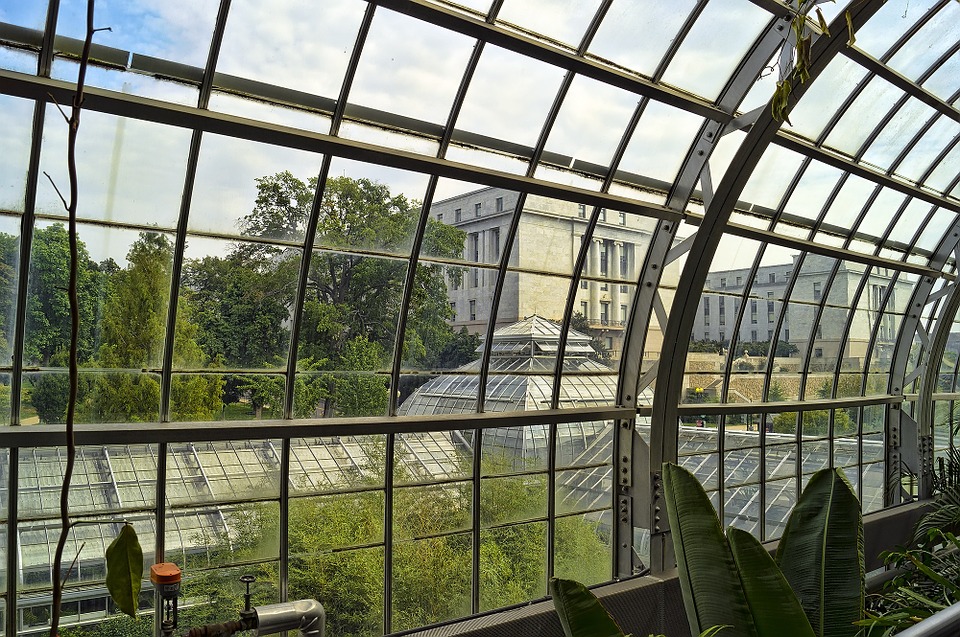A conservatory is a building or room having glass or tarpaulin roofing and walls used as a greenhouse or a sunroom. If in a residence, it would typically be attached to the house on only one side. Conservatories originated in the 16th century when wealthy landowners sought to cultivate citrus fruits such as lemons and oranges that began to appear on their dinner tables brought by traders from warmer regions of the Mediterranean. Municipal conservatories became popular in the early 19th century.

There is certainly a wide choice when it comes to adding addition indoor space to your property. And as fashion changes many are understandably confused when it comes to understanding what the differences are between a Garden Room, an Orangery and a Conservatory. To the untrained eye there may not seem to be much difference between the three, but this is far from the case.
For those interested in the true differentiation between conservatories, orangeries and garden rooms, the distinction lies in the history of the structures.
Conservatories History
Conservatories however are thought to have developed from orangeries as a way to protect smaller shrubs and herb plants during the harsh winter months. They were used as green houses and it was only during the Victorian era were we started to see them being integrated into the houses living space.
These days, the purpose of orangeries, garden rooms and conservatories has changed beyond recognition. They are now seen as a valuable addition to any house, providing a luxury living space that looks out across the garden.
Differences in design and construction
There are some important differences in both the design and construction of the three structures. Essentially, the difference lies in how the structure complements a house and how much glassing is on the roof. A conservatory is traditionally a more versatile structure than an orangery, with the shape, style and design suited to the house. The construction is generally simple and straightforward, meaning they can easily be adapted for their intended purpose.
Orangeries, on the other hand, are more like a traditional house extension. They generally feature more brickwork than conservatories and blend into houses in a subtle and elegant way. A good way to think of an orangery is as an extension with a hint of conservatory. They usually have more brickwork but large windows and a glass roof are still the main features.
When it comes to purpose, conservatories tend to prioritise the ‘outside room’ element more than orangeries and garden rooms do. A conservatory will usually have a better view of the garden as they keep brickwork to a minimum. Orangeries and garden rooms, on the other hand, are generally thought of as more private spaces which focus on luxury.

Garden rooms however are more traditional extension style in their construction. Think of them as a pitched roof tiled extension with more glazed areas than normal. The always have a pitched roof and can be constructed from a mixture of both glazing and roof tiles.
Conservatories are available in a variety of materials including uPVC, aluminium and timber whereas orangeries tend to be made from timber, although uPVC orangeries are available. Garden rooms are generally made from traditional mixture of brick, tile, wood and glass.
Roof Design
One of the easiest ways to distinguish one type of extension from another is in the design of the roof.
A Conservatory will always have a fully glazed roof. This may feature eaves, gables and turrets, but will always be entirely glazed providing the maximum amount of light and heat into the room below.
A Garden Room however will feature a tiled roof which usually matches that of the building it is adjoined to. This can create amazing vaulted ceilings and often include roof glazing and a glazed gable, again increasing the amount of natural light to the room.
For the modern interpretation of an Orangery the roof will be flat with a multi-paned glazed timber roof lantern that provides natural light to the room below. The flat roof will be finished with either lead or a modern alternative such as single ply polymeric roof membrane.
Orangeries, garden rooms and conservatories are now available with modern glass technologies to try and keep the space warm in winter and cool in summer. However, it is impossible with the amount of glazing these forms of extension use to realistically maintain a balanced temperature. This is why our conservatory sail shades & our shade sail drapes are idea for these structures, as they blend function, form and practicality and compliment all three extension options.